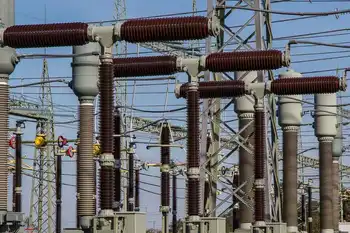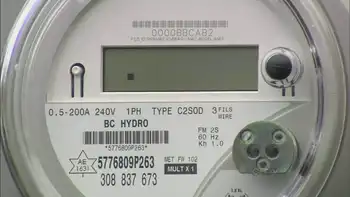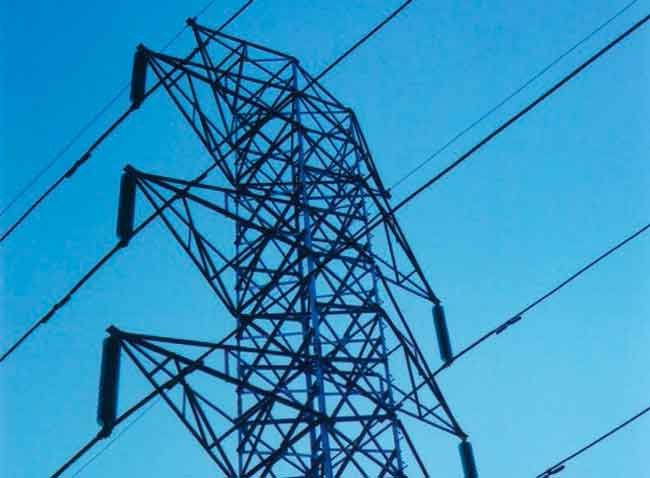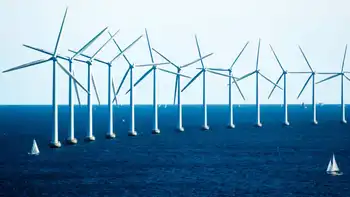Ohio Edison to repower coal plant with biomass
By Environmental Expert
NFPA 70e Training
Our customized live online or in‑person group training can be delivered to your staff at your location.

- Live Online
- 6 hours Instructor-led
- Group Training Available
In the agreement, filed in federal court in Columbus, Ohio and joined by the states of New York, New Jersey and Connecticut, Ohio Edison will repower the R.E. Burger Units 4 and 5 near Shadyside, Ohio with biomass fuel. The consent decree modifies a 2005 consent decree requiring Ohio Edison to reduce emissions of sulfur dioxide (SO2) and nitrogen oxide (NOx) at several of its coal-fired plants.
The modified consent decree will substantially reduce emissions of SO2 and NOx from Burger's current levels and also reduce carbon dioxide (CO2) emissions from current levels by more than 1.3 million tons a year. Burger will be the largest coal-fired electric utility plant in the country to repower with renewable biomass fuels and the first such plant at which greenhouse gas emissions will be reduced under a Clean Air Act consent decree.
The original 2005 consent decree resolved a lawsuit filed in 1999 under the New Source Review provisions of the Clean Air Act regarding Ohio Edison's W. H. Sammis plant and required that the company reduce SO2 emissions not only at Sammis but also at several of its smaller plants, including Burger. That agreement gave Ohio Edison three options to reduce Burger's SO2 emissions: shut down the plant, install a scrubber, or repower with natural gas.
Under the modified agreement, Ohio Edison will repower Burger beginning in 2012 with mostly biomass fuels, co-firing with not more than 20 percent low sulfur coal, including natural wood from waste tree trimmings and dedicated sustainable nurseries, agricultural crops, grasses and vegetation waste or products.
Following a year of initial operation and optimization, the Burger plant will be subject to enforceable emissions rates for SO2, NOx and particulate matter (PM). Reductions from current levels of SO2 emissions are expected to be as much as 14,000 tons a year; for NOx, as much as 1300 tons a year; and for PM, as much as 700 tons a year.
As a result of this agreement, conversion to biomass fuel combustion is expected to approach “carbon neutrality,” meaning that CO2 emissions released by burning biomass fuel will be offset by the amount of CO2 absorbed from the atmosphere by the wood and vegetation grown to produce the fuel. After offset, Burger is expected to emit approximately 400,000 tons of CO2 emissions a year, based on 20 percent coal co-firing, versus more than 1.7 million tons from coal-fired combustion prior to repowering with biomass fuel.
The adverse effects on the environment of CO2 emissions, particularly from coal-fired power plants, are well-documented. Last April, EPA issued the “Proposed Endangerment and Cause or Contribute Findings for Greenhouse Gases under the Clean Air Act,” which identified the dangers of the current and projected concentrations of the six key greenhouse gases, the most significant being carbon dioxide. In addition, sulfur dioxides, nitrogen oxides and particulate matter cause severe respiratory problems and contribute to childhood asthma. They are also significant contributors to acid rain, smog and haze, which impair visibility in national parks.
“This is a great result for the health and the environment of the nation,” said John C. Cruden, Acting Assistant Attorney General for the Justice Department's Environment and Natural Resources Division. “We are pleased that Ohio Edison has chosen to significantly reduce greenhouse gases and other pollutants from the Burger plant and hope that Ohio Edison will become the standard-bearer for other companies considering conversion to renewable biomass fuels under the auspices of the EPA and state environmental agencies.”
“Today's settlement improves air quality for the local community and reduces greenhouse gas emissions by requiring the use of a renewable, carbon-neutral fuel to generate electricity,” said Cynthia Giles, Assistant Administrator for EPA's Office of Enforcement and Compliance Assurance. “EPA will seek similar commitments from companies to replace coal-fired electric generation with cleaner, renewable energy in future Clean Air Act settlements.”
The consent decree, lodged in the U.S. District Court for the Southern District of Ohio, is subject to a 30-day public comment period and approval by the federal court. A copy of the consent decree is available on the Department of Justice Web site.











